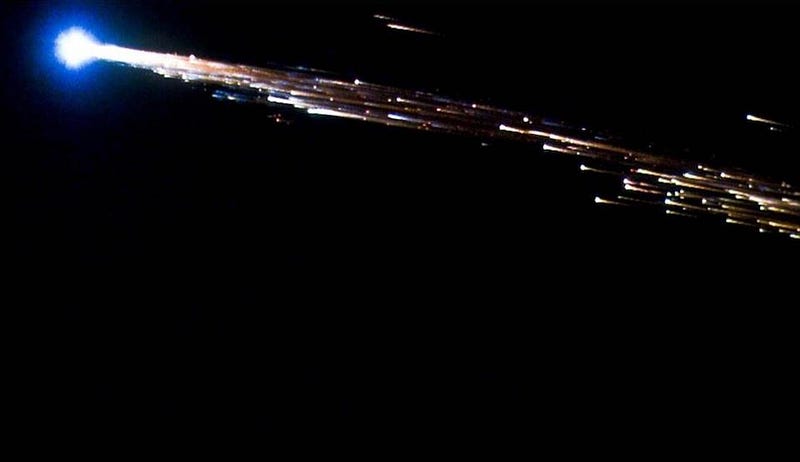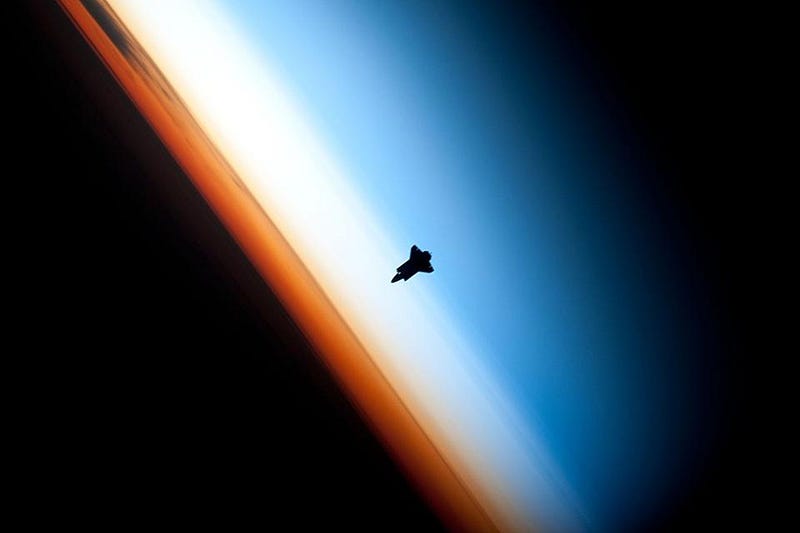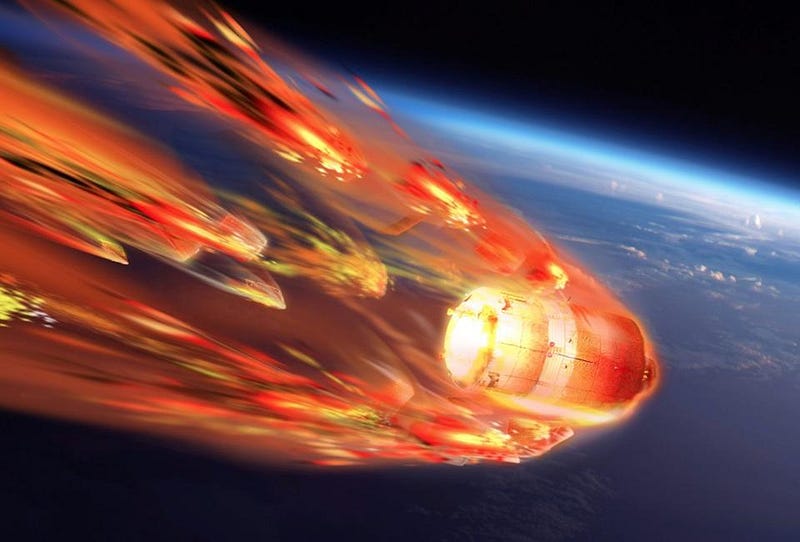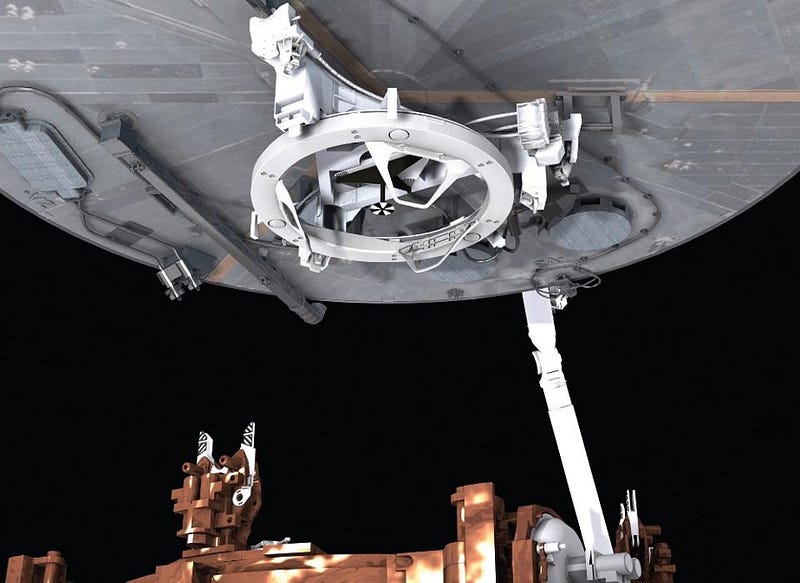The Hubble Space Telescope Is Falling

And if we don’t prepare to catch it now, it’ll be too late.
Since 1990, the Hubble Space Telescope has been redefining how we view our Universe. From hundreds of miles above the surface of the Earth, it orbits the entire world every 97 minutes. Multiple servicing missions, including the final one in 2009, have corrected its optics, enhanced its cameras, replaced worn-out parts, and boosted it to higher orbits. With the decommissioning of the space shuttle, however, the telescope that changed the world is now looking ahead to its inevitable end-of-life. Even if the fine-guidance sensors never fail; even if the reaction wheels remain operational; even if the communications equipment never dies, Hubble is in trouble. It’s presently falling back towards Earth, and there are no plans in place to stop its orbital decay.

Hubble is currently orbiting Earth at a mean altitude of 353 miles, or 568 kilometers. We typically define the border between Earth’s atmosphere and outer space as 60 miles (about 100 kilometers) up, but in reality the situation is far more complicated. The atmosphere never truly ends, but simply gets more and more diffuse the higher up you go, with atoms and molecules that are gravitationally bound to the Earth extending to altitudes up to 10,000 km (6,200 miles). Beyond that point, the Earth’s atmosphere is indistinguishable from the solar wind, with both consisting of tenuous, hot atoms and ionized particles.

Although the overwhelming majority of our atmosphere (by mass) is contained in the lowest layers, with the troposphere containing 75% of Earth’s atmopshere, the stratosphere containing another 20%, and the mesosphere containing almost all of the remaining 5%. Beyond that, atmospheric drag drops off significantly, and long-term orbits are possible. From space, those lowest three layers are the only ones that are optically visible, with most satellites in low-Earth orbit being located above them all: in the thermosphere. Up at these incredible altitudes, a typical atmospheric molecule (of oxygen, for instance) might travel for a kilometer or more before colliding with another one.

But the Hubble Space Telescope is much larger than an oxygen molecule, and is moving much more quickly than one, too. Moving at about 5 miles per second, it collides with these high-altitude air molecules on a continuous basis, with each collision stripping it of a tiny, imperceptible bit of speed. Over the course of an hour, a day, or even a month, the changes aren’t noticeable. Give it enough time, though, and those changes add up to something big. The loss of altitude and speed means that, very slowly, Hubble will start to spiral closer to Earth.
Which is too bad, because the science we’ve not only gotten, but continue to get from Hubble, is unlike anything else in human history. As the observatory falls to lower altitudes, collisions with air molecules become more frequent, accelerating the process. Additionally, it’s an uneven effect, as Hubble spends half of every 97 minutes in sunlight and half in darkness, which will cause the highly asymmetrical Hubble Space Telescope to begin to tumble. If we do nothing, these drag forces will add up until Hubble becomes a fireball in the atmosphere, disintegrating into a multitude of parts and experiencing what’s known as an “uncontrolled entry.” The telescope is far too big to simply burn up, and the fiery debris could literally land anywhere.

During the previous servicing missions, Hubble has been “boosted” to higher orbits, in order to maintain it for longer. Without a crewed, reusable servicing vehicle like the shuttle, however, this is no longer feasible. Unless we develop some new technology and heavily invest in the training necessary to complete a life-saving mission, Hubble’s stint as humanity’s greatest optical observatory will unceremoniously come to an end. An uncrewed mission could be sent to robotically program a controlled re-entry, where the surviving components would land in the ocean, but this will only shorten its lifespan.

If we keep the status quo, it’s conceivable that the components on Hubble will last for decades to come. But its orbit won’t. As Michael Massimino, one of the astronauts who serviced Hubble aboard the Space Shuttle for the final time in 2009, related:
Its orbit will decay. The telescope will be fine, but its orbit will be bringing it closer and closer to Earth. That’s when it’s game over.
That final mission, therefore, included a docking mechanism that was installed onto the telescope: the Soft Capture and Rendezvous System. Any properly-outfitted rocket could safely take it home.

But time is of the essence to develop the technology that can either save it and prolong its life, or to take it safely out of orbit. If it continues on its current path, it will likely come crashing down to Earth in an uncontrolled fashion by the mid-2030s at the latest, and possibly in just over a decade, depending on a number of unpredictable factors. The only planned apparatus capable of servicing or boosting Hubble, NASA’s Space Launch System, has already seen its first planned flight slip behind schedule. If things slip far enough, we may have no option but to de-orbit.

The truth is that, more than any other observatory in history, the Hubble Space Telescope has changed how we view the Universe. Although other ground-based and space-based observatories have been built and will be flying that surpass Hubble on a number of fronts, for some classes of observing, it’s still the best tool humanity has ever created. But by the very nature of its orbit, not only is its lifetime finite, but its demise will come in a horrific, potentially dangerous fashion if we do nothing. Saving it for further use is a long-term project that requires planning now. Hubble is falling, and if we don’t take the steps to catch it soon, it will be too late.
Ethan Siegel is the author of Beyond the Galaxy and Treknology. You can pre-order his third book, currently in development: the Encyclopaedia Cosmologica.





